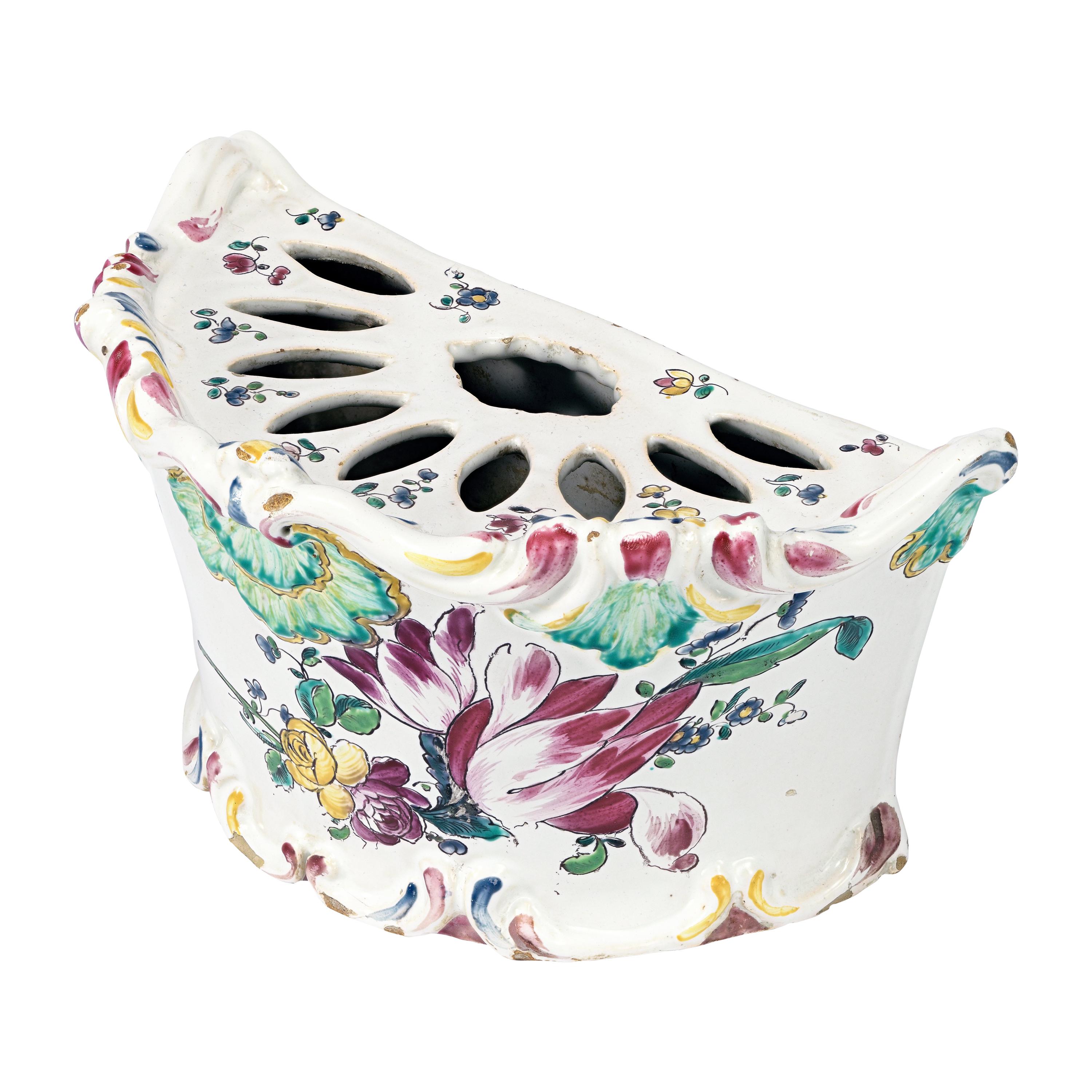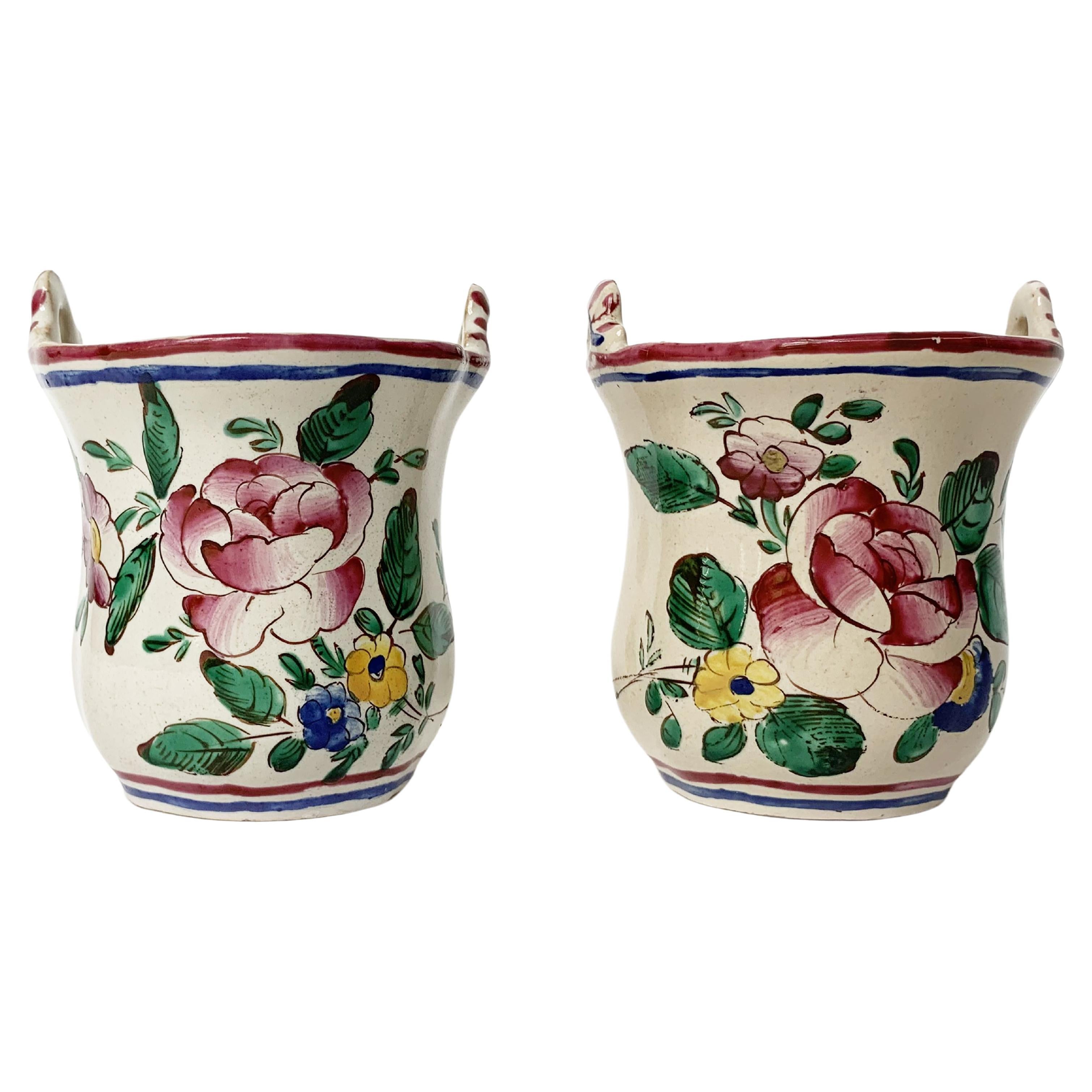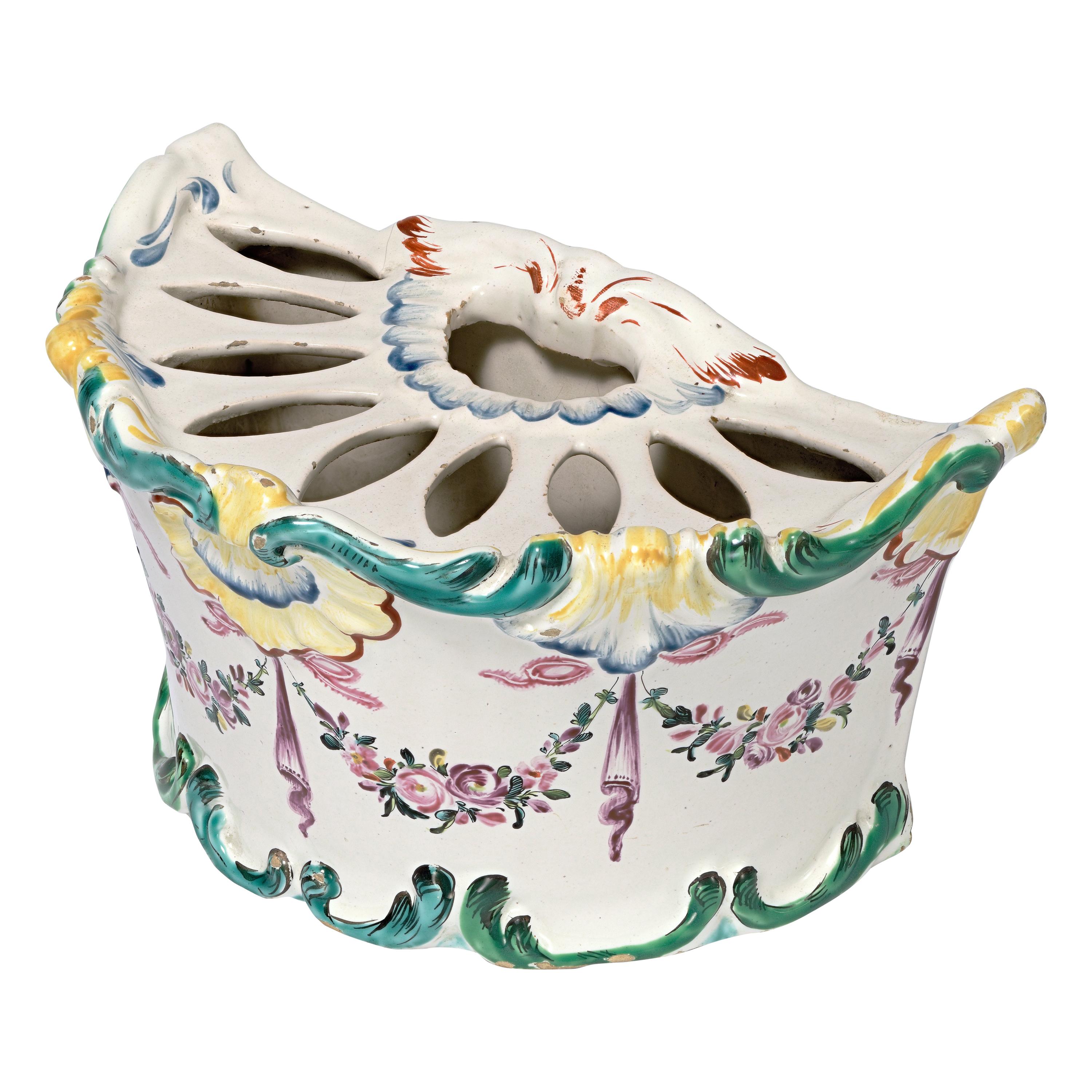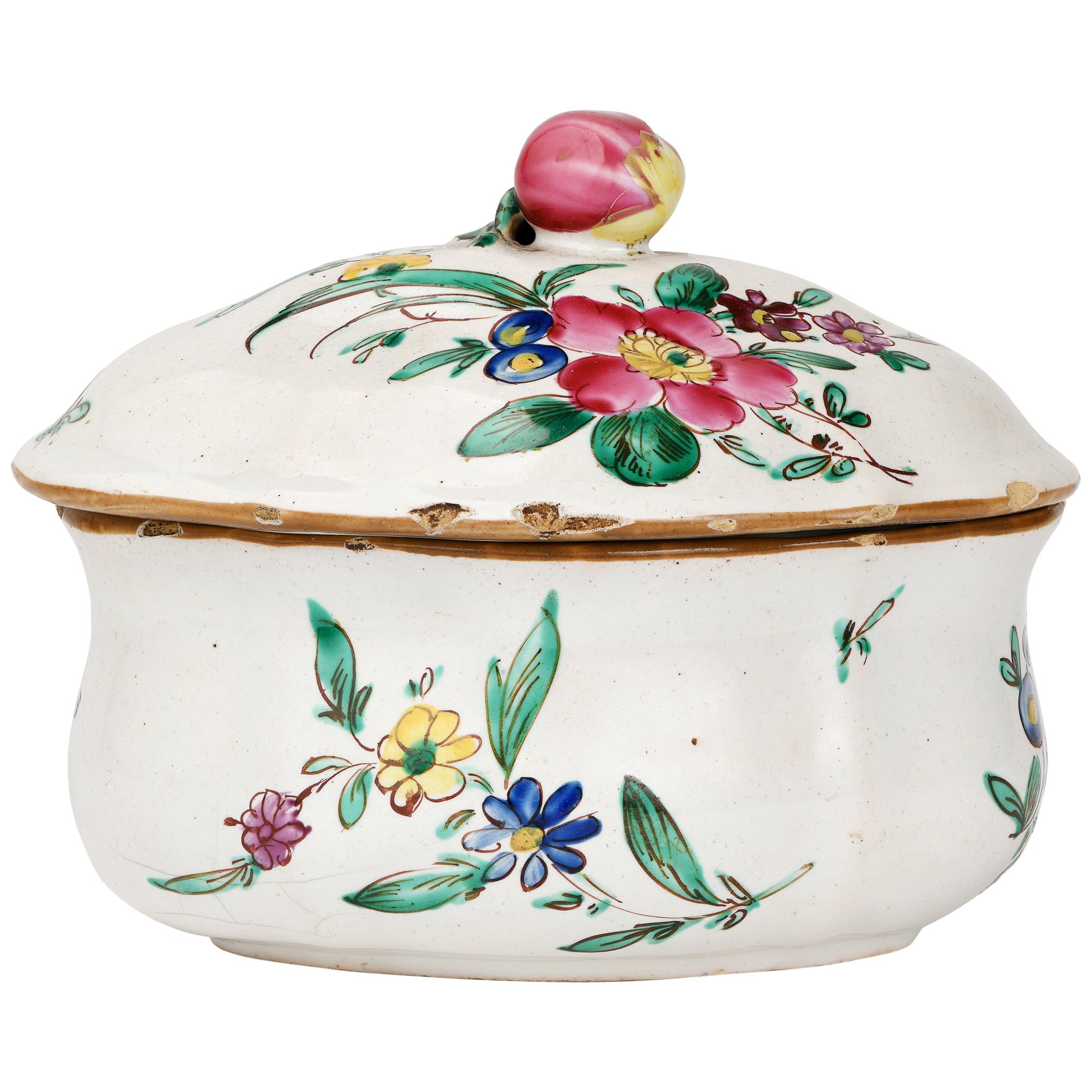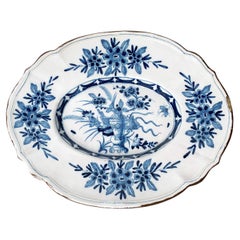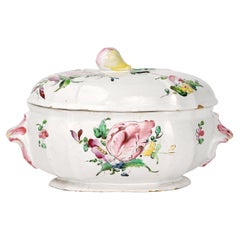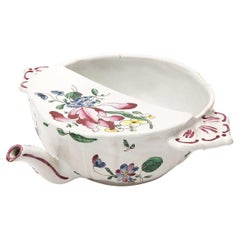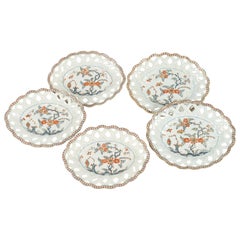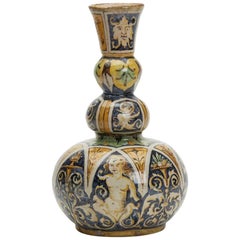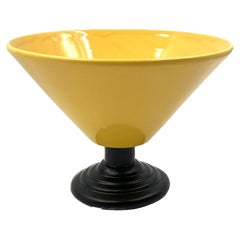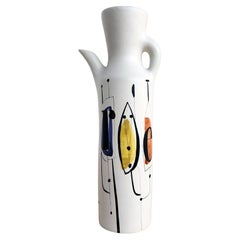Items Similar to Italian Maiolica Pharmacy Flasks Felice Clerici, Milan Circa 1770-1780
Video Loading
Want more images or videos?
Request additional images or videos from the seller
1 of 22
Italian Maiolica Pharmacy Flasks Felice Clerici, Milan Circa 1770-1780
About the Item
Two maiolica pharmacy flasks
Milan, Felice Clerici Manufacture, 1770-1780
They each measure 9.44 in (24 cm) in height x 6.10 in (15.5 cm) in diameter
lb 4 (kg 1.8)
State of conservation: intact with very slight chips.
The maiolica and porcelain factories of the eighteenth century mainly belonged to great royal or noble families who made the manufacture of ceramic works a motif of prestige. In Milan instead, under Maria Theresa of Austria, we observe the opening of new factories which, by virtue of the privatization granted by the government, took a real business risk and gave rise to flourishing factories. Among these, we can find that of Felice Clerici, whose production was among the most elegant and requested of the moment. The entrepreneur founded his own company in 1745 and inserted himself brilliantly in the new European stylistic movement which saw maiolica in full competition with European porcelain in terms of taste and the refined quality of its production.
These two maiolica flasks have a globe-shaped body, with a high neck terminating in a mouth and a small beak to permit the pouring of liquids; they rest on a low goblet with a rounded concave base.
The ornamentation on the front, with knots of thin ribbons and floral festoons on the shoulder, shows an elegant medallion decorated with a landscape in purple grisaille. A stylized acanthus leaf motif garnishes the glass, while the neck mimics an ashlar pattern. At the center of the vases, there is cursive apothecary writing outlined in manganese brown indicating the contents of each: “Acqua di Sambuco” (Elderberry Water: the bark was used as a purgative, the flowers as stimulants and sudorifics, the fruit for dysentery) and “Acqua di Spermaran” (Sperm Frog Water or Sperniola: used to refresh, relieve pain and inflammation. See Cristoforo Masino, Voci di Speziera dei secoli XIV-XVIII, Piacenza 1988).
The colors are bright and lively with a prevalence of green copper and an ample use of purple.
Some pieces of the same series are kept in private Milanese collections and a jug is displayed in the windows of the International Ceramics Museum in Faenza.
The secondary elements of the decoration have a design similar to that of the vessels of the Pharmacy of the Charity Hospital of Novara (now exhibited in the Civic Museum of Novara, nn. inv. 155-165; at Palazzo Madama in Turin; in the Civic Collections of the Castello Sforzesco, nn. inv. 369 e 1471). The origin of these vases, in the past traditionally considered to be from Lodi, Turin or Pesaro, has definitively been attributed to Milan due to studies done by Raffaella Ausenda, who demonstrated their Milanese provenance. See Raffaella Ausenda, Vasi da Farmacia di Felice Clerici, in Atti XLI Convegno Internazionale della Ceramica, Savona 2008, pp. 39-40 e cfr. Raffaella Ausenda in Ausenda, a cura di, Musei d’Arti Applicate, Tomo II, Milano 2001 n. 364, p. 385.
- Creator:Felice Clerici (Maker)
- Dimensions:Height: 9.45 in (24 cm)Diameter: 6.11 in (15.5 cm)
- Sold As:Set of 2
- Style:Neoclassical (Of the Period)
- Materials and Techniques:Maiolica,Glazed
- Place of Origin:
- Period:1770-1779
- Date of Manufacture:circa 1770
- Condition:Wear consistent with age and use. Intact with very slight chips.
- Seller Location:Milano, IT
- Reference Number:1stDibs: LU4352216711111
About the Seller
4.3
Vetted Professional Seller
Every seller passes strict standards for authenticity and reliability
Established in 1860
1stDibs seller since 2018
21 sales on 1stDibs
Associations
International Confederation of Art and Antique Dealers' Associations
- ShippingRetrieving quote...Shipping from: Milano, Italy
- Return Policy
Authenticity Guarantee
In the unlikely event there’s an issue with an item’s authenticity, contact us within 1 year for a full refund. DetailsMoney-Back Guarantee
If your item is not as described, is damaged in transit, or does not arrive, contact us within 7 days for a full refund. Details24-Hour Cancellation
You have a 24-hour grace period in which to reconsider your purchase, with no questions asked.Vetted Professional Sellers
Our world-class sellers must adhere to strict standards for service and quality, maintaining the integrity of our listings.Price-Match Guarantee
If you find that a seller listed the same item for a lower price elsewhere, we’ll match it.Trusted Global Delivery
Our best-in-class carrier network provides specialized shipping options worldwide, including custom delivery.More From This Seller
View AllMaiolica Oval Tray, Felice Clerici Manufactory, Milan, Circa 1770-1780
By Felice Clerici
Located in Milano, IT
Small oval tray
Felice Clerici Manufactory 1745-1780
Milan, Circa 1770-1780
Maiolica polychrome.
Dimensions: 10.82 x 8.66 in (27.5 x 22 cm); weight 0.4...
Category
Antique 1770s Italian Rococo Ceramics
Materials
Maiolica
Italian Maiolica Tureen, Rubati Manufacture, Milan, circa 1770-1780
By Pasquale Rubati
Located in Milano, IT
Maiolica tureen
Pasquale Rubati Manufacture
Milan, circa 1770 - 1780
Maiolica polychrome decorated “a piccolo fuoco” (third fire).
It measures 6.69 in x 11,02 x 8.26 (17 x 28 x ...
Category
Antique 1770s Italian Rococo Ceramics
Materials
Maiolica
Ancient Maiolica Cup, Rubati Manufacture, Milan, Circa 1770 - 1780
By Pasquale Rubati
Located in Milano, IT
Sick cup
Pasquale Rubati Manufacture
Milan, Circa 1770 - 1780
Maiolica decorated in polychrome “a piccolo fuoco” (third fire)
It measures: h 2.36 x 7.4 x 7.87 (h 6 x 19 x 20 cm)
...
Category
Antique 1770s Italian Rococo Ceramics
Materials
Maiolica
Ancient Maiolica Plates Pasquale Rubati, Milan Circa 1770-1780
By Pasquale Rubati
Located in Milano, IT
Five oval maiolica dishes with pierced edge
Manufacture of Pasquale Rubati
Milan, 1770-1780
Three small oval dishes 10.23 in x 7.67 in (26 cm x 19.5 cm)
Two large oval dishes 10.82 in x 8.85 in (27.5 x 22.5 cm)
lb 3.5 (kg 1.8)
State of conservation: intact
The five dishes of different sizes have an oval shape, a mixtilinear edge and a molded polylobed shape with a surface enriched with a relief weave motif extending to the brim and forming a perforated basket...
Category
Antique 1770s Italian Rococo Ceramics
Materials
Maiolica
Ancient Italian Maiolica Tureen Milano, 1770 circa
By Felice Clerici, Pasquale Rubati
Located in Milano, IT
Maiolica tureen “allo struzzo” (ostrich decoration)
Milan, Felice Clerici or Pasquale Rubati factory, circa 1750-1780
Measures: 9.25 in x 12.79 in x 10.23 in (cm 23.5 x cm 32.5 x cm 26)
lb 4.78 (kg 2.17)
State of conservation, a felûre consolidated inside with slight edge chipping restored.
In Milan in the 18th century two Majolica warehouses were opened, the first, by Felice Clerici, in 1745, the second in 1756 by Pasquale Rubati.
Traditionally this type of decoration has been attributed to the Pasquale Rubati factory. In reality the motif “allo struzzo”, one of the clearest examples of how the taste for chinoiserie met with considerable success during the 18th century, had been produced, in specimens of greater or lesser quality, by both Milanese manufactories.
This Maiolica tureen has a swollen and ribbed oval bowl, rests on an extroflexed foot and shows stirrup handles.
The tri-color ornament, in the typical tones of Japanese "Imari" decorations, shows an idealized oriental landscape that develops around a perforated rock and has a willow tree with long lance-shaped leaves framing the long-legged bird figure. The ornamentation is enhanced by decorative elements such as butterflies, small florets and a vase with a thin flowery stem.
The lid is ribbed with a pear-shaped knob on top.
The decoration was called in the Milanese manufactories "allo struzzo" (ostrich decoration) and this refers to the oriental figure Xian He or the crane, symbol of longevity, here losing its symbolic value. It is hypothesized that among some 16th century engravings...
Category
Antique 1770s Italian Chinoiserie Ceramics
Materials
Maiolica
Pair of Ancient Italian Maiolica Flower Pots Milan, Rubati Factory, 1770 circa
By Pasquale Rubati
Located in Milano, IT
Maiolica flower pot “a mezzaluna”
decorated with trompe l’oeil
Pasquale Rubati Factory
Milan, circa 1770
Measures: each 4.7 in (cm 12) x 5 in (c...
Category
Antique 1770s Italian Rococo Ceramics
Materials
Maiolica
You May Also Like
Antique Italian Maiolica Classical Painted Vase 19th Century
Located in Bishop's Stortford, Hertfordshire
A stunning and rare antique Italian Maiolica pottery triple gourd vase hand-painted with classical stylised figurative and scroll designs in typical ...
Category
Antique 19th Century Italian Vases
Materials
Maiolica, Pottery
Pair Creamware Vases 18th Century English with Turquoise Trim Circa 1780
By Neale & Co.
Located in Katonah, NY
WHY WE LOVE IT: One of our absolute favorites!
A pair of 18th-century creamware flower holders complete with stands and covers made in England by Neale & Co. was one of the finest 18th century English potteries. The entire composition is classically elegant. The flower holders are decorated with turquoise swags and delicately painted flowers. The tops are pierced for flower stems. The handles are made in a pair of entwined snakes painted in turquoise with bright red mouths. This flower holder could be used with the tops for individual stems or without the tops for a bouquet. All parts of the set have survived and remained together for the past 200 years.
History of Creamware:
Creamware is the name given to a type of earthenware pottery made from cream-colored clays from Dorset and Devonshire combined with calcined flint.
Creamware was first produced in England sometime before 1740. Foremost of the pioneers of creamware in the Staffordshire Potteries was Thomas Whieldon. He produced a wide variety of creamware. The young Josiah Wedgwood was in partnership with Thomas Whieldon from 1754-1759. When Wedgwood left to set up his own business, he immediately directed his efforts to develop creamware. Many of the Staffordshire Potteries, especially Neale & Co., learned from Whieldon and Wedgwood and developed their own excellent creamware products.
Dated: 1795 to 1810 Hanley Staffordshire...
Category
Antique Late 18th Century English Neoclassical Vases
Materials
Creamware
Yellow Conic Vase, Postmodern Memphis Milan Style, Italy 1980s
Located in Firenze, IT
Postmodern Yellow Conic vase
Italy 1980s
ceramic
in Memphis Milan style.
27 cm diam x 20 cm H
Conditions: excellent, two barely visible small chips.
Category
Vintage 1980s Italian Post-Modern Ceramics
Materials
Ceramic
Roger Capron - Vintage Ceramic Roe Flask
By Roger Capron
Located in Stratford, CT
Vintage ceramic decorative flask signed by Roger Capron - Vallauris, France
Roger Capron was in influential French ceramicist, known for his tiled tables and his use of recurring mo...
Category
Vintage 1960s French Mid-Century Modern Ceramics
Materials
Ceramic
Roger Capron - Vintage Ceramic Gin Flask
By Roger Capron
Located in Stratford, CT
Vintage ceramic decorative flask signed by Roger Capron - Vallauris, France
Roger Capron was in influential French ceramicist, known for his tiled tables and his use of recurring mo...
Category
Vintage 1960s French Mid-Century Modern Ceramics
Materials
Ceramic
Roger Capron - Vintage Ceramic Gin Flask
By Roger Capron
Located in Stratford, CT
Vintage ceramic decorative flask signed by Roger Capron - Vallauris, France
Roger Capron was in influential French ceramicist, known for his tiled tables and his use of recurring mo...
Category
Vintage 1960s French Mid-Century Modern Ceramics
Materials
Ceramic
Recently Viewed
View AllMore Ways To Browse
Italy Frog
Antique Copper Jugs
1745 Glass
Antique Green Goblets
Antique Porcelain Water Jugs
Antique Copper Measuring Jugs
Apothecary Show Globe
Austria Thin Porcelain Small Vases
Wedgewood Majolica Plate
Jicarilla Apache
Jl Metz Furniture
Joe Colombo Card Table
Joe Colombo Cups
Joe Colombo Poker Table
Joe Colombo Poker
Joelle Ferlande Table
John A Colby And Sons Furniture
John Bond Francisco

